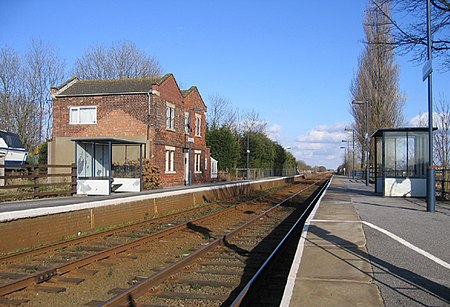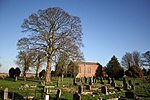Swineshead railway station

Swineshead railway station serves the village of Swineshead in Lincolnshire, England. Although named Swineshead, the station is, in reality, located in the hamlet of Swineshead Bridge some miles north of Swineshead. The line was opened by the Boston, Sleaford and Midland Counties Railway. The station is now owned by Network Rail and managed by East Midlands Railway who provide all rail services. The station is unstaffed and offers limited facilities other than two shelters, bicycle storage, timetables and modern 'Help Points'. The full range of tickets for travel are purchased from the guard on the train at no extra cost, there are no retail facilities at this station.
Excerpt from the Wikipedia article Swineshead railway station (License: CC BY-SA 3.0, Authors, Images).Swineshead railway station
Railway Line Road,
Geographical coordinates (GPS) Address External links Nearby Places Show on map
Geographical coordinates (GPS)
| Latitude | Longitude |
|---|---|
| N 52.96969 ° | E -0.18725 ° |
Address
Swineshead
Railway Line Road
PE20 3PT , Swineshead CP
England, United Kingdom
Open on Google Maps










